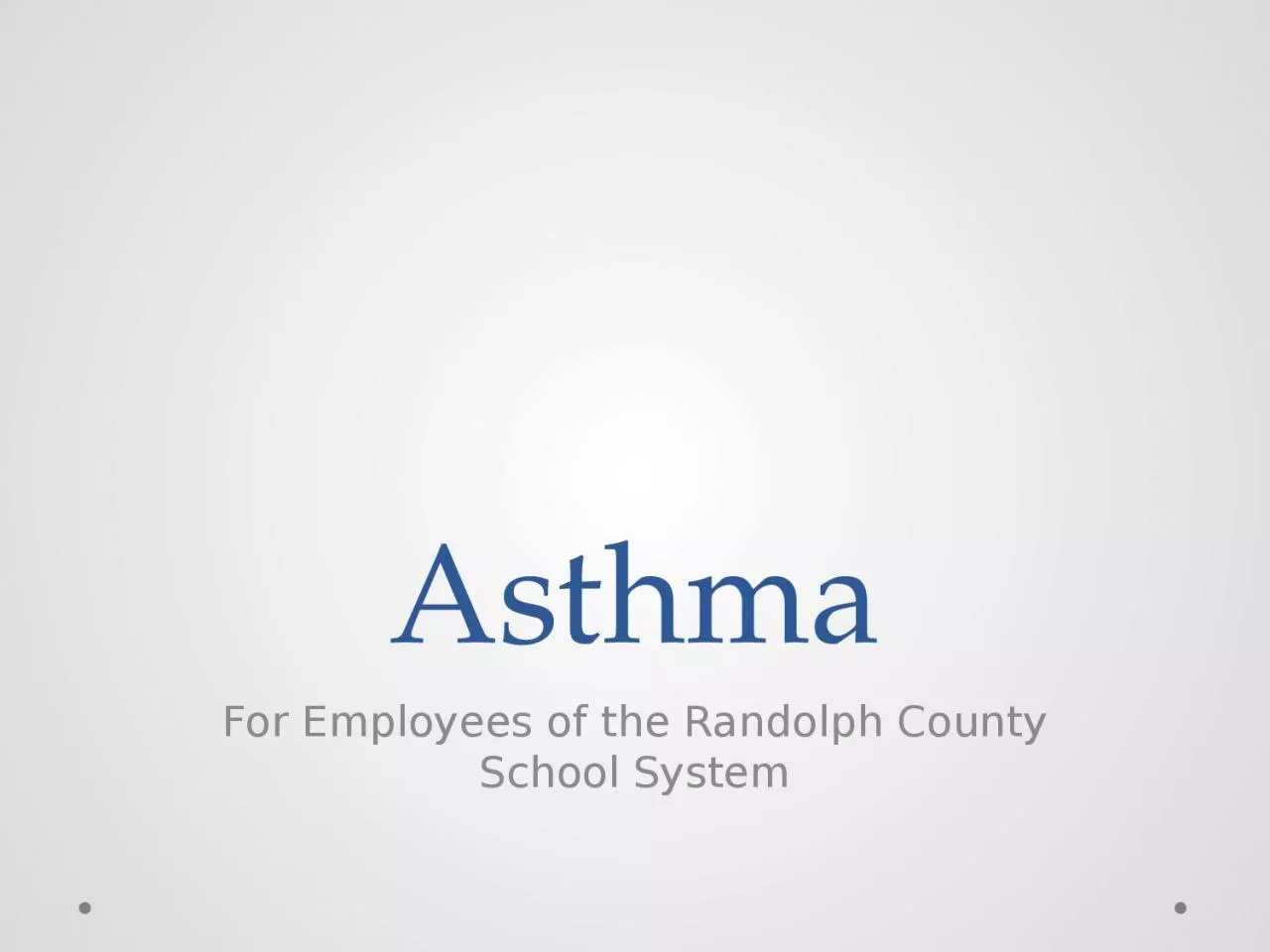

What is Asthma Asthma is a disease that affects your lungs It is one of the most common longterm diseases of children but adults can also have asthma Symptoms of an Asthma Attack ID: 932913
Download Presentation The PPT/PDF document "Asthma For Employees of the Randolph Cou..." is the property of its rightful owner. Permission is granted to download and print the materials on this web site for personal, non-commercial use only, and to display it on your personal computer provided you do not modify the materials and that you retain all copyright notices contained in the materials. By downloading content from our website, you accept the terms of this agreement.
Slide1
Asthma
For Employees of the Randolph County School System
Slide2What is Asthma?
Asthma is a disease that affects your lungs. It is one of the most common long-term diseases of children, but adults can also have asthma.
Slide3Symptoms of an Asthma Attack
Wheezing
Breathlessness
Chest tightness
Coughing
Sweating
Inability to talk
Slide4Asthma Triggers
Dust and smoke
Air pollution
Respiratory infections
Fear or anxiety
Perfume
Exercise
Plants and moldMedications, such as aspirinAnimal danderChanges in weather (extreme temperatures)
A trigger is anything that sets off or starts an asthma attack. They include:
Slide5Preventing Asthma Attacks
Prevention is the key.
Follow these preventative measures to reduce an asthma attack.
Limit triggers
Control emotions
Prevent infections
Reduce environmental triggersExercise carefully
Slide6Preventing Infections
Colds and other respiratory infections can make an asthma condition worse.
One of the most common ways to catch a cold is by rubbing the nose or eyes with hands infected with the cold virus.
Infection often occurs by touching surfaces (such as doorknobs) or objects that other people have touched.
Slide7Preventing Infections
Some ways to reduce the chances of getting a cold or other respiratory infection include:
Washing hands regularly, especially after using the restroom or shaking hands with other people and before eating.
Cleaning environmental surfaces, such as desks, with a virus-killing disinfectant.
The viruses that cause colds can survive up to 3 hours on objects such as desks, doorknobs, counters, etc.
Disinfect these areas often
Getting vaccinated for the flu, whooping cough (pertussis) when a vaccine is available
Slide8Medications for Asthma
Available in 2 forms:
Long-term
Quick relief
Long-term:
P
revent or reverse inflammation (swelling) in the airway
Help to decrease sensitivity, which helps keep the airways from reacting to asthma triggersQuick Relief (“rescue” or “short acting”):
U
sed to stop an asthma attack
Work quickly to relieve the sudden swelling
Lessen wheezing, coughing and chest tightness
Allows the person to breathe easier
Slide9Methods of Delivery
Inhalation is the most common method of taking long-term and quick-relief asthma medications
Inhalation allows the medication to reach the airways faster and work quicker
Medications are inhaled by using metered dose inhalers (MDI), a dry powder inhaler (DPI) or a small-volume nebulizer
Pill forms are for both long-term and quick-relief medications
Long-term medications are also available in the form of an injection
Slide10Asthma Summary
Is a life-long lung disease that affects millions
Can be controlled if you know the triggers for it and how to limit those triggers
Taking prescribed medication can also
limit attacks
To help those having an attack:
K
now the signs of an attack
Wheezing, breathlessness, chest tightness, coughing, sweating, inability to talk, etc.
A
ct quickly
G
ive appropriate care